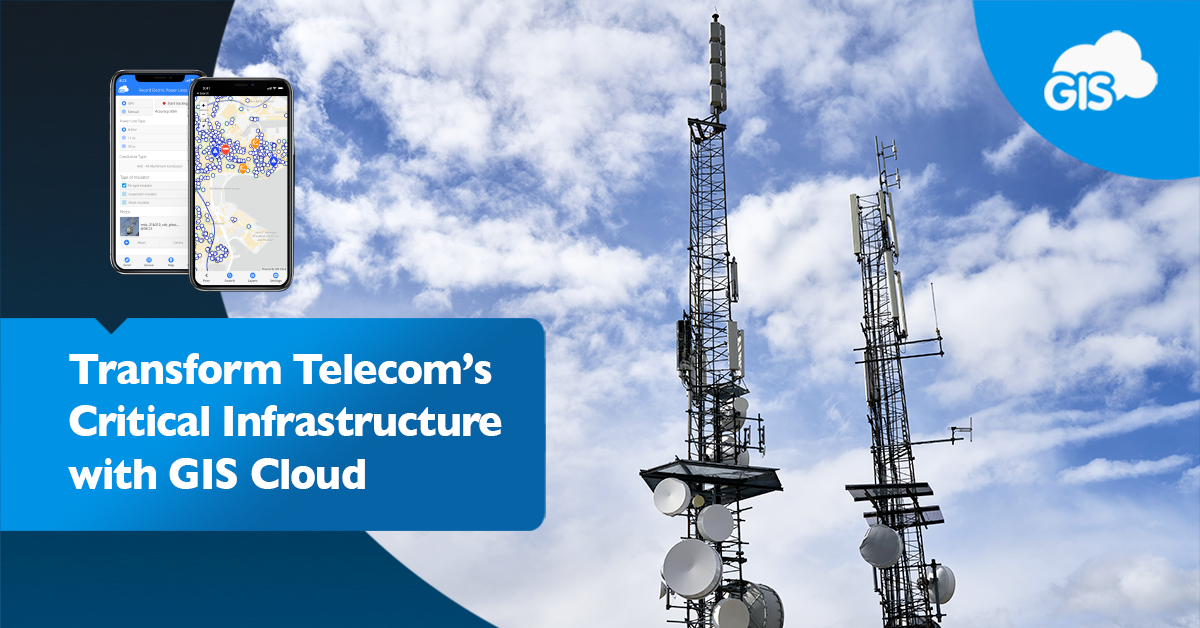
In today’s rapidly evolving telecommunications industry, staying competitive and reliable requires more than selling superior systems or software. It necessitates a comprehensive approach encompassing all aspects of a vendor’s operations. One crucial area that telecoms and operators must focus on is digitizing their critical infrastructure. By digitally transforming and maintaining their critical assets, organizations can ensure reliability, reduce operating costs, and pave the way for future innovation.
However, despite the numerous benefits, only 30% of organizations with critical infrastructure have fully embraced digital transformation. This blog will explore the reasons behind this hesitancy, the challenges involved, and how GIS Cloud solves these hurdles.
The Current Situation: Limited Digitization of Critical Infrastructure
Telecoms and operators are vital in meeting the increasing demand for mobile phones and internet services. As a result, their wired and wireless infrastructure is constantly evolving, generating vast amounts of geographical data. Cloud Geographic Information System (GIS) provides the ideal solution for collecting, centralizing, and managing this data, allowing telecom innovators to optimize their networks’ planning, deployment, maintenance, and operations.
However, despite the clear advantages of digitizing critical infrastructure, most telecoms have slowly adopted these solutions. Surprisingly, less than 30% of organizations have begun digitizing their assets, and even among those that have, less than 50% of their critical infrastructure is digitized correctly. This reluctance stems from various implementation, cost, and performance challenges.
Implementation Challenges: Cost, Risk, and Slow Implementation
Implementing complex solutions for digitizing critical infrastructure often requires substantial initial investments in licensing, infrastructure, employee training, and process alteration. The cost factor alone can be a major deterrent for organizations, especially when the return on investment is not immediately apparent. Justifying such investments without clearly understanding when the results will materialize adds considerable risk to the decision-making process.
Moreover, the significant changes required to adopt enterprise and company-wide solutions can be met with resistance, as employees may need help understanding the benefits or seeing how these changes align with their daily tasks. This lack of understanding can hinder adoption rates and slow the implementation process, extending the deployment timeline to a year or longer.
Performance Issues and Integration Limitations
Another challenge organizations face when digitizing critical infrastructure is performance. Heavy tools that rely on complex setups, workflows, and big data often suffer from slow rendering, application crashes, or functionality issues in environments with limited technology, such as offline areas or regular mobile devices. These performance limitations can frustrate users and diminish overall satisfaction with the solution.
Additionally, integration limitations pose a significant obstacle to achieving a seamless workflow. Heavy solutions are often not designed for integration with other systems, leading to isolated data islands and incomplete workflows. This fragmented approach results in multiple sources of truth and inefficient processes, as data is not connected to the organization’s operational support systems (OSS/BSS) or other databases.
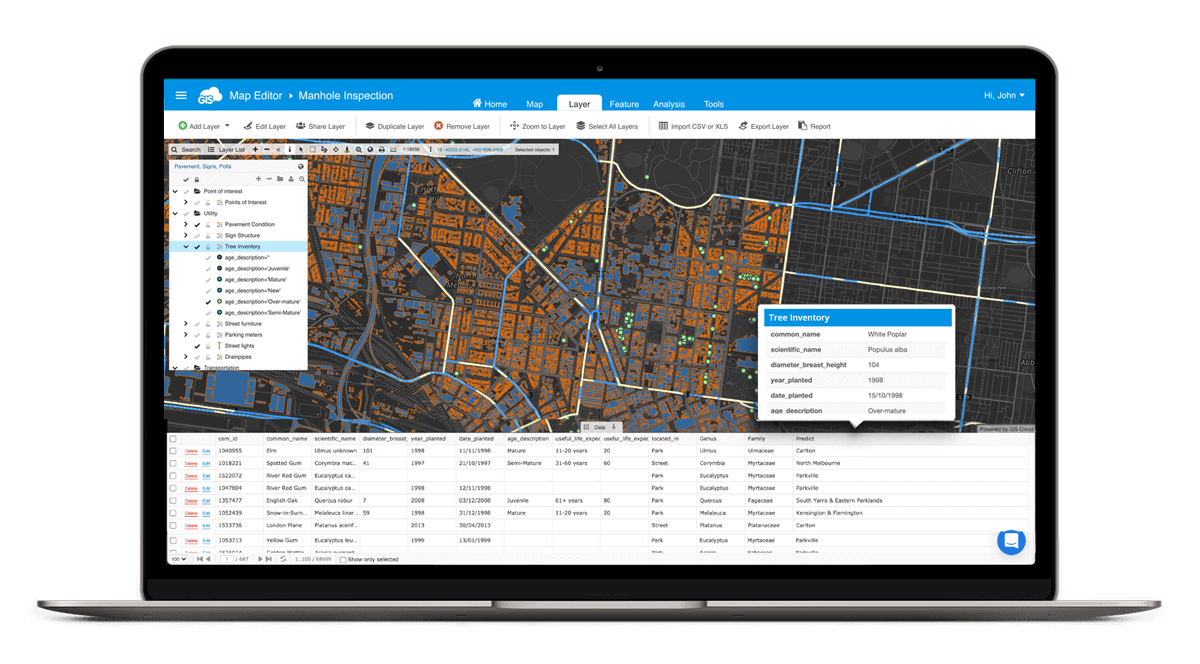
The GIS Cloud Approach: Fast Results, High Adoption Rate, and Embrace & Extend
GIS Cloud has long recognized and addressed the challenges telecoms and operators face in their digital transformation journey. GIS Cloud offers a more location-oriented approach focusing on asset management, workforce coordination, and business intelligence by providing cloud-native, business-oriented solutions. Let’s delve into the three key benefits of the GIS Cloud approach.Fast Results and Low Risk
To reduce initial costs and minimize the risks associated with implementing complex systems, GIS Cloud’s modular approach allows organizations to start with a department-level implementation to achieve a specific business result. Rather than attempting a full-scale digital transformation, organizations can concentrate their resources on departments that require immediate data collection and maintenance improvements. By quickly achieving the first business result, organizations can drive further solution adoption and invest in expanding the implementation to other areas.
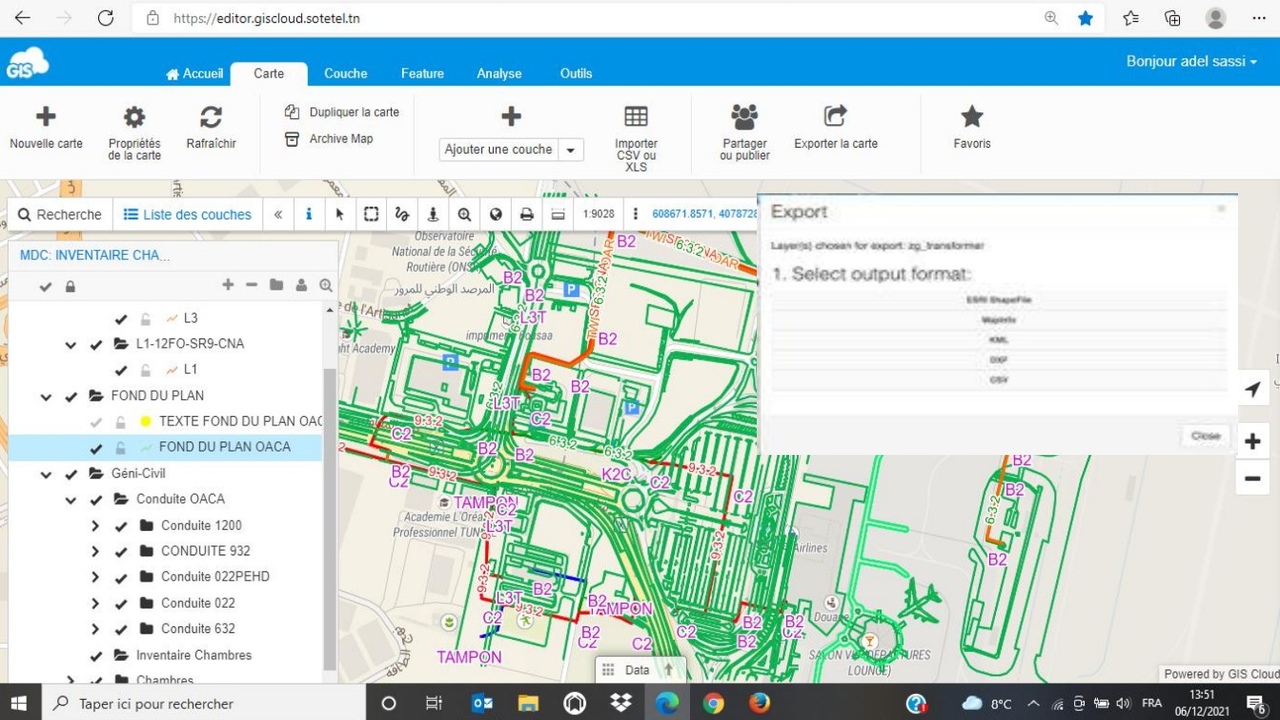
High Adoption Rate
The learning curve and user adoption are critical factors in the success of any solution. GIS Cloud recognizes this and has designed its tools to be user-friendly and easily learnable. Advanced users typically require only 3-5 days of training to master the tools, while primary users can start working with mobile apps and web applications in as little as half a day.
Additionally, GIS Cloud’s Map Engine, renowned for its fast rendering capabilities, ensures that even complex workflows, big data, and system integrations run smoothly on all devices. This high-speed performance significantly increases user satisfaction and adoption rates throughout the organization.
Embrace & Extend
GIS Cloud’s integration-oriented products are designed to connect with existing databases seamlessly, systems of record (OSS/BSS), and other asset management systems like Computerized Maintenance Management Systems (CMMS), Enterprise Asset Management (EAM), or GIS tools. This integration capability empowers organizations to leverage their existing investments and extend the usage of adopted solutions. By bridging the gap between disparate systems, GIS Cloud enables organizations to extract more value from their data, improve workflows, and justify initial investments.
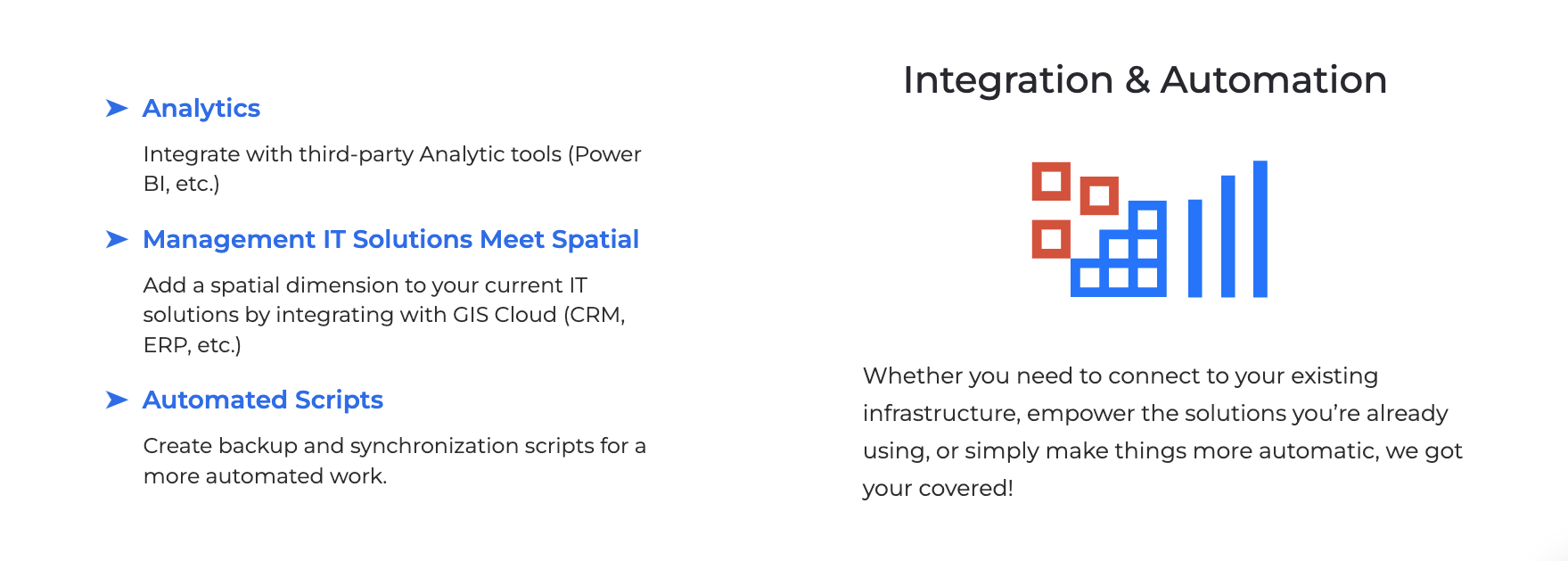
GIS Cloud Portfolio: Addressing Critical Infrastructure Challenges
GIS Cloud offers three solution portfolios tailored specifically for telecoms and operators. These portfolios cover various aspects of critical infrastructure, from cellular towers and antennas to transmission networks and customer analysis. Let’s explore each portfolio and its modules in more detail.
Cellular Towers and Antennas
This portfolio focuses on the registration, condition assessment, maintenance, and operations management of cellular towers and antennas. The modules within this portfolio enable organizations to create and update their geospatial database of critical infrastructure, including towers, antennas, and adjacent equipment. Field crews and contractors can collect detailed information about asset location, equipment type and condition, signal strength, maintenance requirements, and more. By maintaining an accurate and up-to-date asset database, organizations can make informed decisions regarding planning, analysis, and innovation.

Transmission Networks & CPE
This portfolio addresses the challenges of deploying and maintaining fiber optic networks and last-mile network connections. The Fiber Optic Deployment Planning, Coordination & Registration module assists organizations in determining the best location for fiber optic components, considering existing infrastructure, terrain, and other factors. The Last Mile Network Deployment module facilitates the installation and maintenance of last-mile networks, such as FTTX and FTTH. These modules help organizations optimize network deployment, reduce costs, and improve performance and response times.
Customer & Network Analysis
The modules within this portfolio provide organizations with insights into network coverage, service availability, customer analysis, and competition analysis. Organizations can optimize network design, predict capacity, and plan for expansion by creating detailed maps of physical network infrastructure and analyzing network coverage. Moreover, customer and competition analysis tools enable organizations to improve customer experience, prioritize repairs during service disruptions, and gain a competitive advantage.
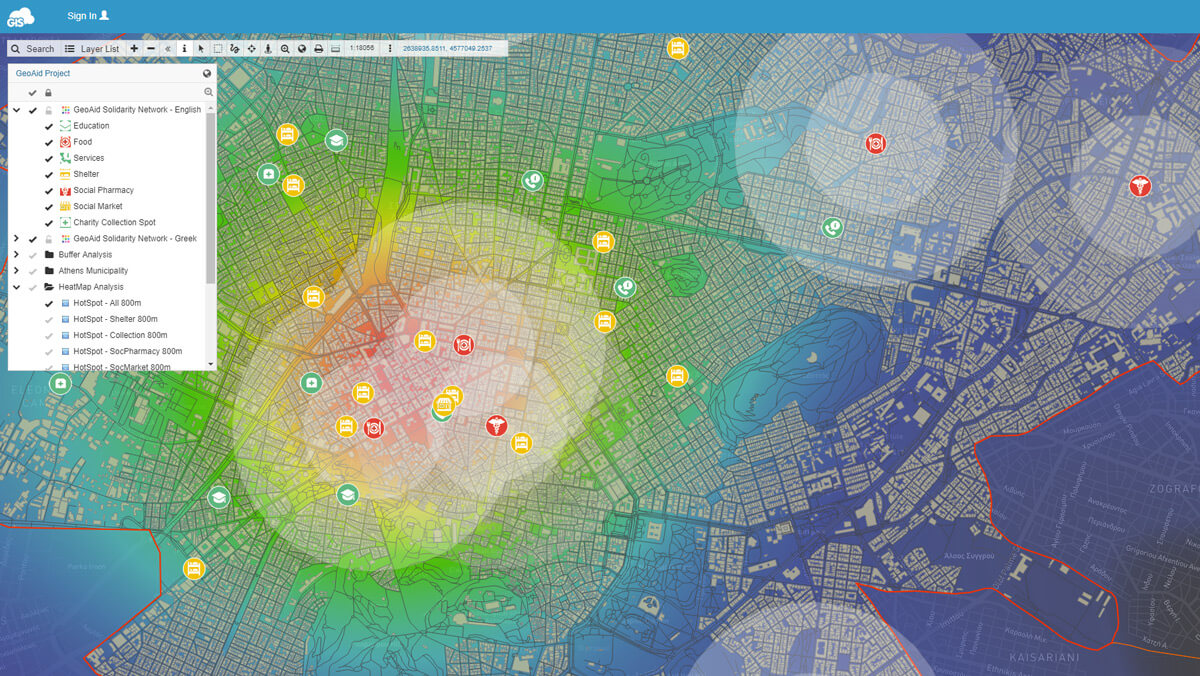
In the Cloud or On-Premises
All the modules offered by GIS Cloud can be deployed on the cloud or entirely on the client’s premises through the Private Cloud environment. The Private Cloud solution ensures that all data remains behind the organization’s firewall, with controlled external access for field-to-office workflows. This approach allows organizations to maintain information security control, comply with regulatory requirements, and leverage the benefits of cloud technology.
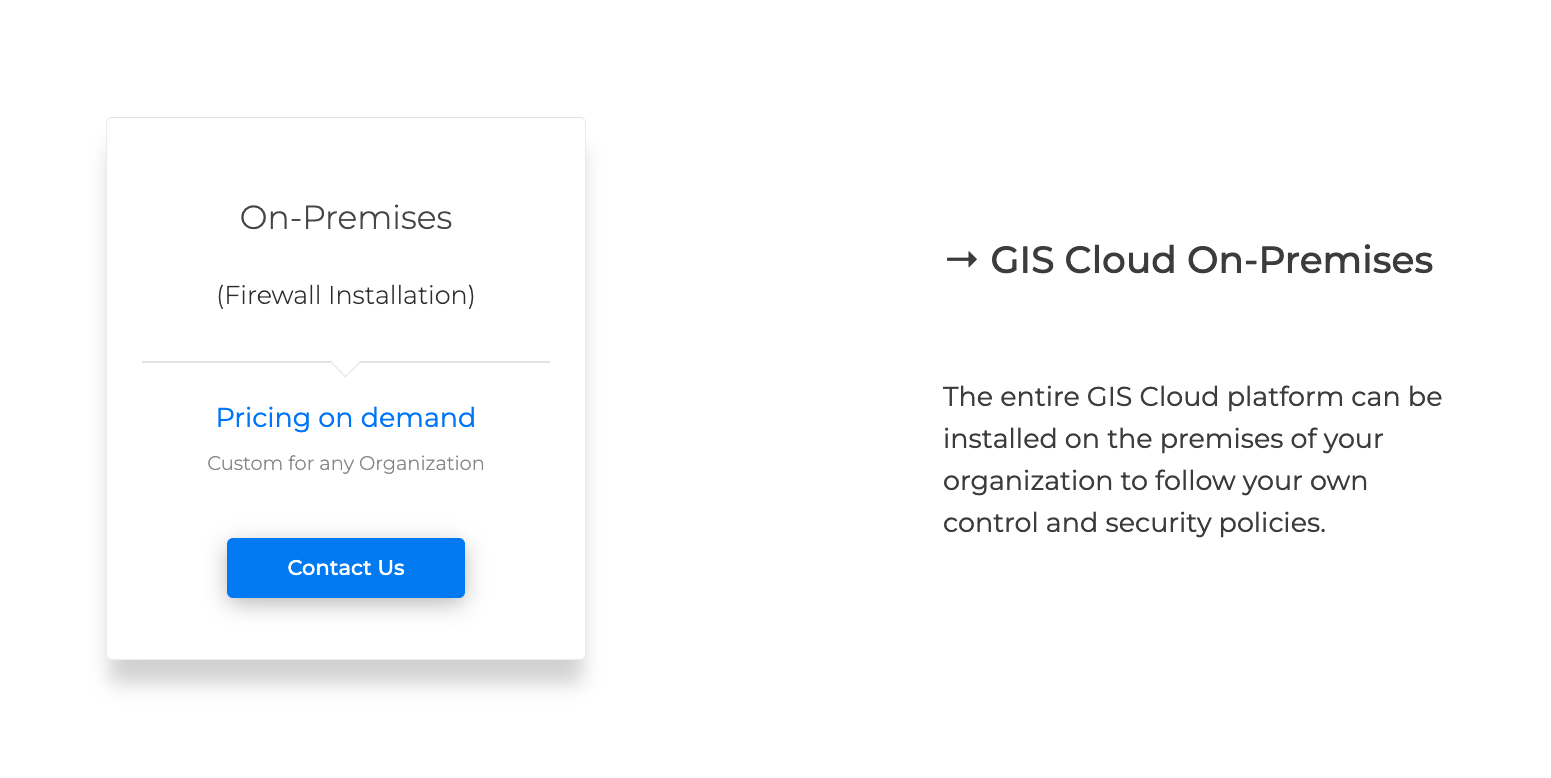
Take the Next Step with GIS Cloud
Digitizing critical infrastructure is crucial for telecoms and operators aiming to thrive in the competitive market. By embracing GIS Cloud’s approach, organizations can achieve fast results, minimize risks, and ensure high adoption rates. GIS Cloud’s portfolio of solutions addresses the challenges faced in cellular towers and antennas, transmission networks and CPE, and customer and network analysis. Whether deployed on the cloud or on-premises, GIS Cloud empowers organizations to unlock the full potential of their critical infrastructure and pave the way for future innovation.
To learn more about how GIS Cloud can transform your critical infrastructure and accelerate your digital transformation, reach out to our Solution Consultants today.






